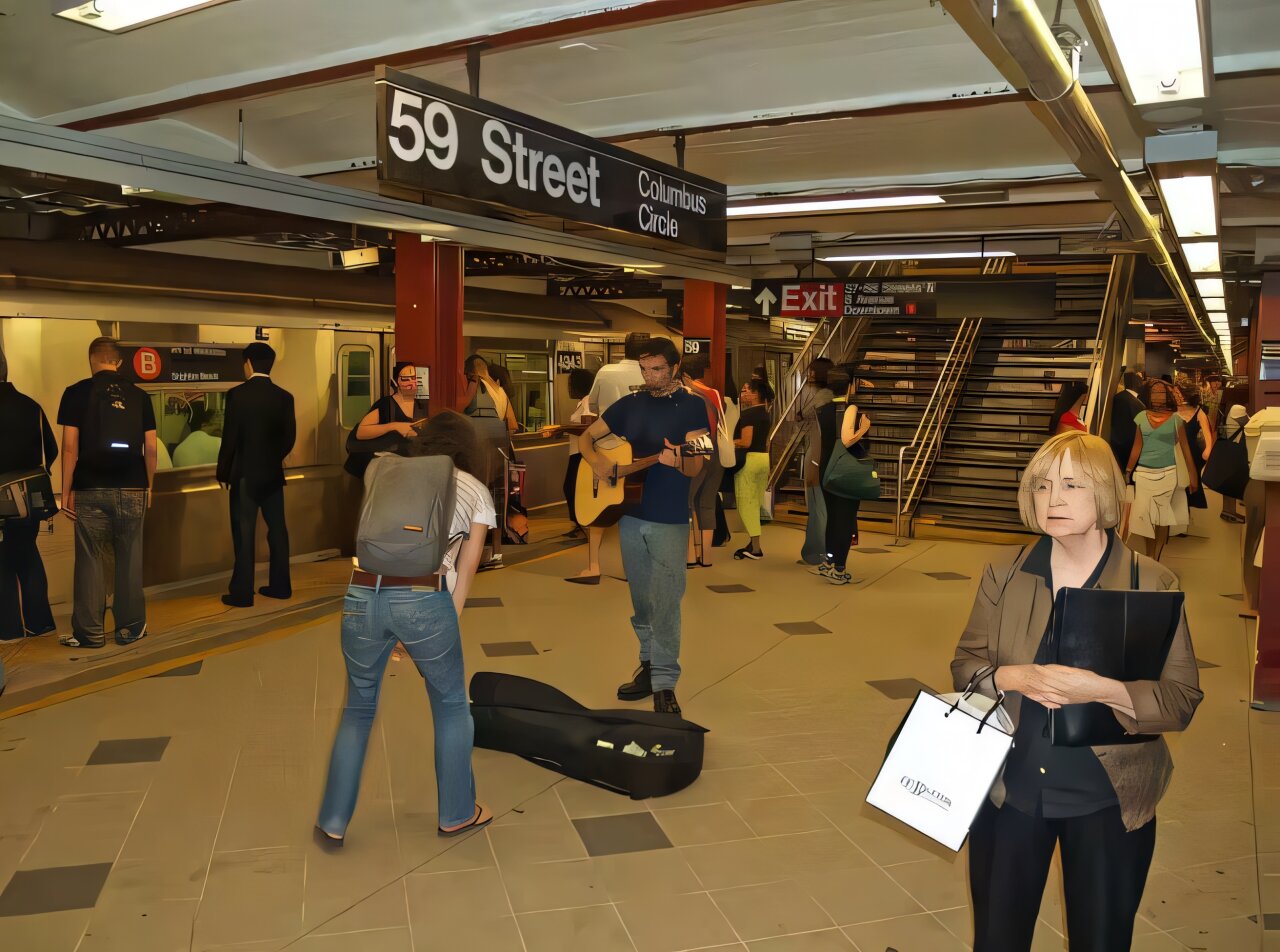On June 24, the date of the New York City Democratic mayoral primary and one of the hottest days of 2025, I squeezed voting into my morning before cramming into a busy and poorly ventilated train car. I cast my ballot for frontrunner Zohran Mamdani who, throughout his campaign, advocated for accessible transportation and free public buses. (His victory will be announced later that evening.)
The train’s sound chimes, warning commuters of the closing doors. But passengers, desperate to escape the torturous heat on the platform, try to pry the doors open again to enter the chilly interior.
The next train comes, and I feel a breeze. It’s unpleasantly warm. It’s not yet 8 a.m. and somehow already in the mid-80s—at least at street level. In the tunnels, it feels much hotter. Governmental failure to alleviate subway heat goes beyond discomfort. It’s time to treat subway heat like the climate adaptation issue and public health hazard that it is.
Maladaptation, which pervades the subway system, refers to well-intended actions that produce harm or increase vulnerability. The air conditioning in train cars cools the interiors but pumps hot air to the platforms. Add in frictional heat generated by braking, trains stalling in poorly ventilated stations and relict infrastructure, and you have the largest public sauna in the country. Not to mention body heat generated by millions of commuters.
Since 1901, average annual temperatures in New York have increased 2.6°F. And in 2024, the city experienced 21 days with highs above 90°F. I interviewed Jack Klein, a New York-based videographer, last month. He has been assessing underground conditions using a weather meter on social media under the name New York Lab. On June 24, Klein recorded a temperature of 94°F at Union Square. With humidity in play, it felt like 111°F.
Sweltering heat affects all New Yorkers, but these conditions make travel particularly difficult for the elderly, pregnant individuals, people with disabilities and people with cardiovascular or respiratory conditions. Many summers ago, a family friend of mine, while waiting at an open-air station, fainted from the blazing July sun and collapsed onto the tracks. She was nine months pregnant. Good Samaritans pulled her to safety, and she and her baby were unharmed, thankfully.
But train conductors, security and police officers, booth operators—they work in these conditions all day. Even the aging infrastructure, when exposed to chronic heat, is more likely to break down and delay passenger travel.
Cooling the subway system is not impossible—just politically and financially inconvenient. It’s not for lack of trying, but efforts have been lackluster at best. My work commute includes standing in the hot air sloshed around by dust-covered fans at Union Square. In a seemingly rare instance of success, the Metropolitan Transportation Authority (MTA) has incorporated cooling systems into five stations opened between 2015 and 2017. These cooling towers reduce humidity and cool stations by 7 to 10 degrees F.
Subway heat is a global issue. Panels that circulate cold water and move cooled air with industrial fans are being trialed on London’s Piccadilly line, which serves approximately 158 million riders annually. In tests on a prototype, the cooling panel lowered surrounding temperatures by 10 to 15°C. Project development has already cost £1.5M—approximately 2 million USD—in governmental funding. Construction and maintenance will cost £20M—or 27 million USD. And that’s just for the Piccadilly line.
Discover the latest in science, tech, and space with over 100,000 subscribers who rely on Phys.org for daily insights.
Sign up for our free newsletter and get updates on breakthroughs,
innovations, and research that matter—daily or weekly.
New York lacks proactive transportation infrastructure planning. In April 2024, the MTA announced its loosely defined goals
It’s unknown if the MTA can accommodate, or agree to pay for, something akin to the London cooling panels. However, cooling the city’s subway stations will ultimately provide New Yorkers with greater resilience to extreme heat and long-term public health savings.
With the mayoral election in November, we must demand leaders and the MTA to invest in the infrastructure that millions use daily.
There is no shortage of funding either. The MTA’s revenue was $19.379 billion in 2022. Congestion pricing, which commenced in January 2025, is expected to reach a revenue of $500 million by year end. This will be used to fund capital improvements in the MTA network. We must make it known that New Yorkers want that money to go toward proactive implementation of cooling technology across the subway system. The issue lies not in technology or capital, but rather, in political and financial will. When will New Yorkers stop suffering from the hellish conditions of the city’s most vital public infrastructure?
Provided by
State of the Planet
This story is republished courtesy of Earth Institute, Columbia University http://blogs.ei.columbia.edu.
Citation:
How do we fix the hellish heat of the New York City subway system? (2025, August 20)
retrieved 20 August 2025
from https://phys.org/news/2025-08-hellish-york-city-subway.html
This document is subject to copyright. Apart from any fair dealing for the purpose of private study or research, no
part may be reproduced without the written permission. The content is provided for information purposes only.
